OK, thanks. you're right I put the temp reference in there, my bad.That's why I thought you were relating to temperature expansion.
Wood, as in plywood that I'm using, with the layers of bonded plies, is less susceptible than a solid piece of wood.
The most troublesome combination would have been the plywood-onyx combination, but that has withstood 6 months of temperature and humidity changes without ill-effect. Onyx, being a crystal-like stone, gets easily cracked when outside forces are applied. Yet, my boxes are fine so far.
If added protection was needed between the wood and stone, a layer of aluminium could be bonded in-between.
Different Materials
Hopefully, you'll post more data on the new enclosureIts always reassuring when the objective measurement agrees with the subjective comparison.
You'll be in the enviable position to compare two radically different designs with the same driver. Assuming the saw doesn't reach the TLs.
BTW - the best materials to build with are composites (MDF, Particle, maybe Ply) as they have minimum resonances. Sadly they are also the ugliest unless you veneer them.
Of course ill post all the data on the enclosures! hahaha dont worry ill keep the saw away from the TL's (for the moment)
Thanks for the heads up, i have plenty of MDF and Chipboard (particle board) that i can use to make a box. Over the many years have built many enclosures a great number for car audio installs so this will be a breeze.
For finishing i may just spray the enclosures in high quality paint or use plastidip as i have an air compressor and spray gun.
Or combination of different materials that resonate at different frequencies.
I'm playing with plywood, aluminium and stone layers lately.
Especially stone.. it can give quite a stunning look. Something different, for sure... I like being different.
Post some pictures Perceval i'd be interested to see that.
Chris this all for fun and learning, don't discredit the enclosures just yet, they are doing a great job so far. The Alpairs are amazing and have proved this from all my current testing, and actually they sound really good even in this MDF TL.
But yes i am going to build and try a different enclosure.
My thinking was to build these
Slim Classic GR dMar-Ken7.3 2v03
http://www.frugal-phile.com/boxlib/P10free/CGR-dMar-Ken73-190216.pdf
I will also build a simple bass reflex box
Alpair 7 Gold | Markaudio
Ill do the bass reflex one first as its a simple build.
The main aim is to find which enclosure suits my listening needs and gives me the performance i desire based on listening and using REW for measurements.
If you're still having fun with this - great. If/when you get around to it I'd be interested in your assessment of the simple BR box vs Dave's CGR
Waddings, Peaks, Compared.
Its amazing what a bit of wadding can do, the various materials, shapes, placement etc it can absorb or shift sound energy and make your speaker and enclosure sound different.
How to Use Sound-Damping and Acoustic Materials in DIY Loudspeakers
nice article above.
I thought id try different variations and test them both musically (listening playing various types of music) and then of course measuring them on REW.
Acoustic Foam
well not really, its actually a pond filtering kit, still a closed cell construction but the colours have a different porosity. The green being more open and allowing more sound energy to pass through.
I also used general polyfill, for this experiment i'm using the green foam.

This Wadding variation 1
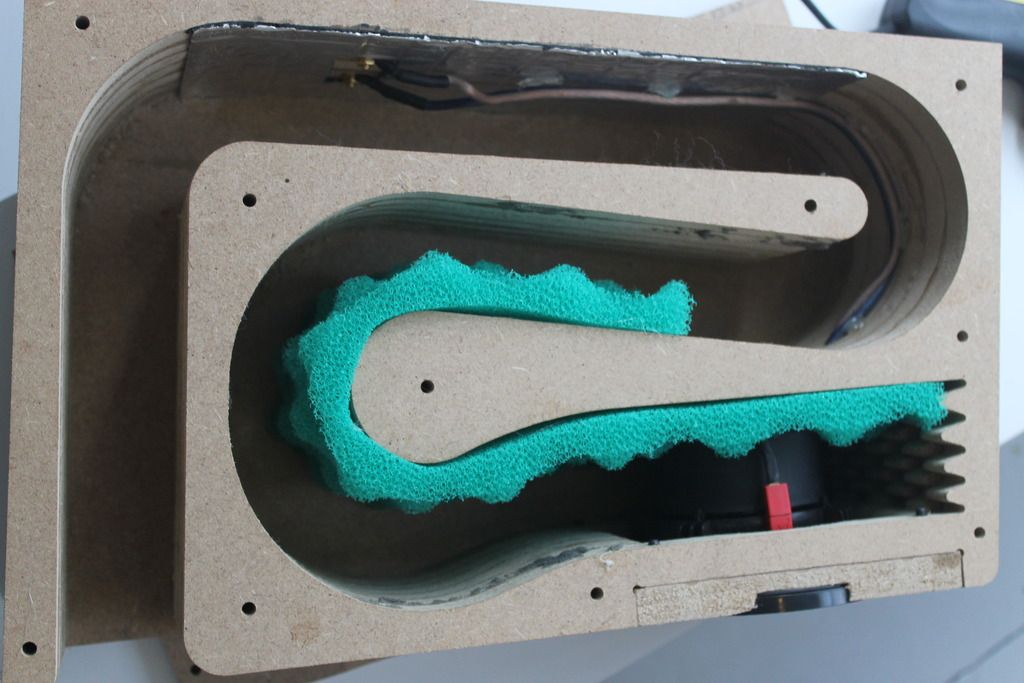
Wadding variation 2

Wadding variation 3

The results!
This is 4cm away from the speaker

This is wadding 1 and 2 vs just an empty TL box 4cm from port

This is wadding 1,2,3 4cm from port

My list of songs to play and test the difference
1. Dire Straights - Money for nothing
2. Sting - Englishman in New York.
3. Dua Lipa - Be The One
4. Arvo Part - Tabula Rasa: 1. Ludas (classical piece)
When it came to me i thought why not measure the peaks on the RTA function? I set the mic up to listening height and distance i usually tend to stand in ( generally stand and enjoy the music as opposed to sitting)
Sting played in wadding 2 first 50secs wadding 2

Wadding 3 playing sting
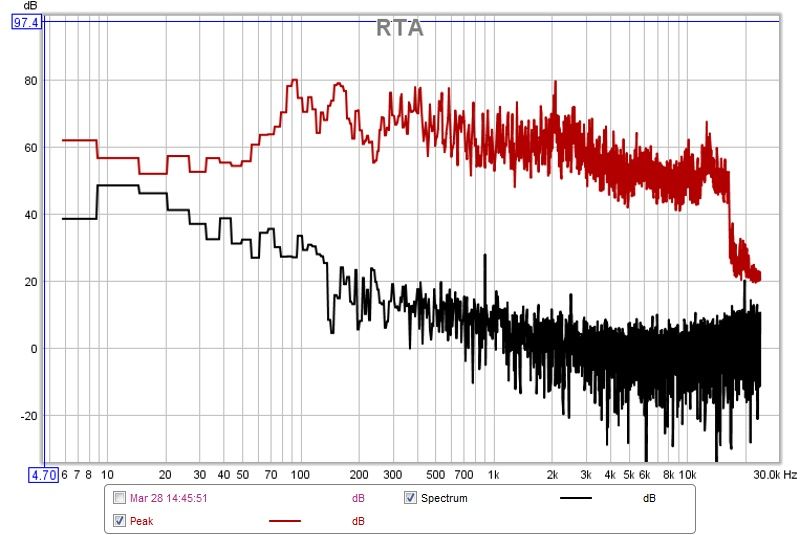
Dire Straights from 1.15 - 2.15mins
Wadding 2
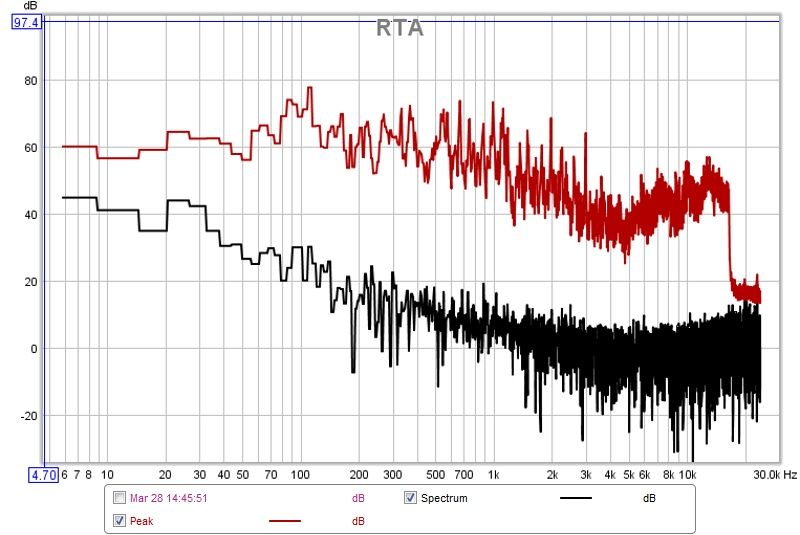
Wadding 3

So guys looking at these which one do you think did best?
Everything was kept the same where possible, volume, testing distance etc.
Its amazing what a bit of wadding can do, the various materials, shapes, placement etc it can absorb or shift sound energy and make your speaker and enclosure sound different.
How to Use Sound-Damping and Acoustic Materials in DIY Loudspeakers
nice article above.
I thought id try different variations and test them both musically (listening playing various types of music) and then of course measuring them on REW.
Acoustic Foam
well not really, its actually a pond filtering kit, still a closed cell construction but the colours have a different porosity. The green being more open and allowing more sound energy to pass through.
I also used general polyfill, for this experiment i'm using the green foam.

This Wadding variation 1

Wadding variation 2

Wadding variation 3

The results!
This is 4cm away from the speaker

This is wadding 1 and 2 vs just an empty TL box 4cm from port

This is wadding 1,2,3 4cm from port

My list of songs to play and test the difference
1. Dire Straights - Money for nothing
2. Sting - Englishman in New York.
3. Dua Lipa - Be The One
4. Arvo Part - Tabula Rasa: 1. Ludas (classical piece)
When it came to me i thought why not measure the peaks on the RTA function? I set the mic up to listening height and distance i usually tend to stand in ( generally stand and enjoy the music as opposed to sitting)
Sting played in wadding 2 first 50secs wadding 2

Wadding 3 playing sting

Dire Straights from 1.15 - 2.15mins
Wadding 2

Wadding 3

So guys looking at these which one do you think did best?
Everything was kept the same where possible, volume, testing distance etc.
Last edited:
Still got a few more variations to do but the results have really been interesting, especially when it comes to listening to the difference.
Think it all comes down to what you perceive and like, theres no doubt in my mind that it certainly changed the way the enclosure sounded and how the music felt.
Think it all comes down to what you perceive and like, theres no doubt in my mind that it certainly changed the way the enclosure sounded and how the music felt.
That's excellent work. Good to see the impact on refinements.Still got a few more variations to do but the results have really been interesting, especially when it comes to listening to the difference.
Think it all comes down to what you perceive and like, theres no doubt in my mind that it certainly changed the way the enclosure sounded and how the music felt.
Notice the overall shape has not changed, but the HF ripple is gone and the curve is smoothed. You should be evaluating at 1m to see the combined effect. There is always a "cost" to damping and it could be overall attenuation (entire curve shifts down 1-2db) or curve looses frequency range. As you say it comes down to our preferences. Nice to be able to tune the system.
You can artificially remove the HF bump at 12Kz if you're source is a PC or something with a S/W equalizer. Usually there's a 8KHz and 16KHz band that you can use to flatten that bump to see if its affecting your perception at listening distance.
Last edited:
Acoustic Foam
well not really, its actually a pond filtering kit, still a closed cell construction but the colours have a different porosity. The green being more open and allowing more sound energy to pass through.
You sure? Regardless, closed cell is defined as being >90% closed and open cell > 50% open, so what you want to use.
GM
You sure? Regardless, closed cell is defined as being >90% closed and open cell > 50% open, so what you want to use.
GM
True, what i meant to say was its the same material just different grades of opening? Does that make sense?
I have four types, one is completely closed then the rest start to be more open.
The best one? That sounds like a street hustle
I can't tell from that type of graph (RTA). I think if you played pink noise, and used the room graphs (RTA) to do your EQ as it indicates where (in general) room absorption is occurring.
lol how did you know i used to hustle? I was only kidding about what you think sounds good.
Still goto learn how to do room graphs and how to determine room acoustics and absorption.
That's excellent work. Good to see the impact on refinements.
Notice the overall shape has not changed, but the HF ripple is gone and the curve is smoothed. You should be evaluating at 1m to see the combined effect. There is always a "cost" to damping and it could be overall attenuation (entire curve shifts down 1-2db) or curve looses frequency range. As you say it comes down to our preferences. Nice to be able to tune the system.
You can artificially remove the HF bump at 12Kz if you're source is a PC or something with a S/W equalizer. Usually there's a 8KHz and 16KHz band that you can use to flatten that bump to see if its affecting your perception at listening distance.
I forgot to put these on!
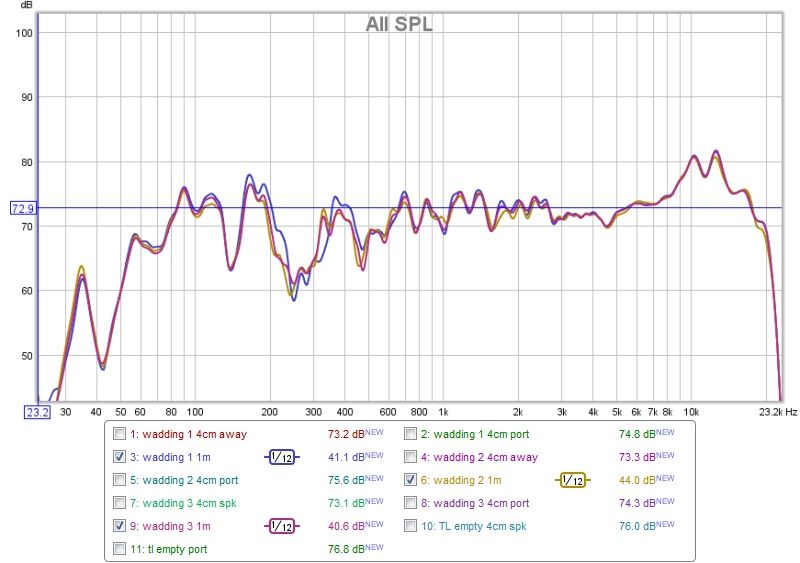
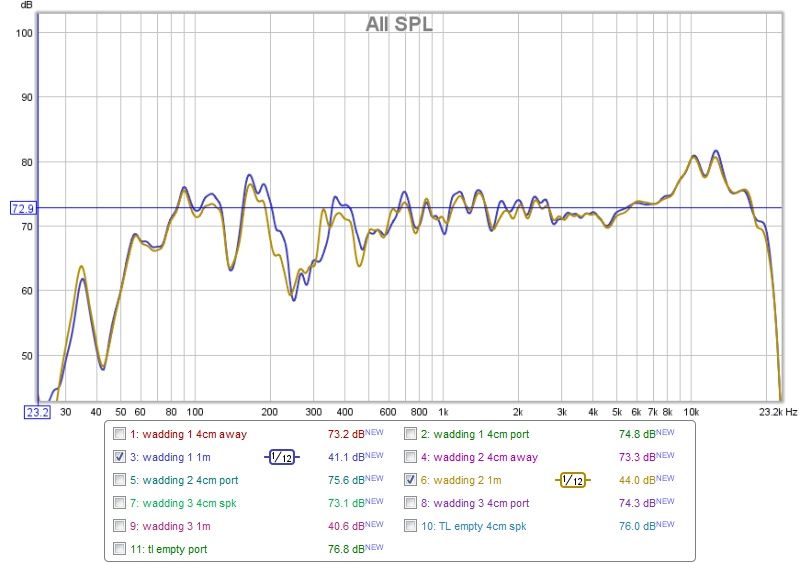
Shame about the dip at 42, probably the room though
it is a shame maybe i should try a different location or like DonV suggested use stands and go 1m away from the wall.
But then again its not realistic, as thats where my speakers are and will have to stay.
Anyway next on the list is to build some different enclosures and see how they sound and work in the room.
I agree with Scott, those dips (at 45Hz, 125Hz, 250Hz) look like room modes. BTW you cannot remove room modes at the speaker, you treat (adjust) the room, or move your listening position, or live with them.
Have you tried the REW <Room Sim> tab to see what modes are where they should be in your room?
Overall it looks impressive and its a single FR from 55-20Khz ish. Your freq axis looks odd ending at 23KHz
Your freq axis looks odd ending at 23KHz
Have you tried the REW <Room Sim> tab to see what modes are where they should be in your room?
Overall it looks impressive and its a single FR from 55-20Khz ish.
Last edited:
You will always have room modes unless you live in an anachoic chamber or an open field.it is a shame maybe i should try a different location or like DonV suggested use stands and go 1m away from the wall.
But then again its not realistic, as thats where my speakers are and will have to stay.
Anyway next on the list is to build some different enclosures and see how they sound and work in the room.
Last edited:
Anyway next on the list is to build some different enclosures and see how they sound and work in the room.
Yes, I see you've recently found and itch that needs scratching. I will watch with a voyeuristic interest
Exactly on both counts.They can be very localised, you are not going to be listening at 1m! You can cut, but don't even be tempted to try and boost a dip, it's like a bottomless pit haha!
Some of them don't bother us and we live with them. Mostly we reorient the speakers, or move the listening position, or move some furniture.
- Status
- This old topic is closed. If you want to reopen this topic, contact a moderator using the "Report Post" button.
- Home
- Loudspeakers
- Full Range
- Transmission Line Speaker Build using Alpair 7.3 speakers, first build.